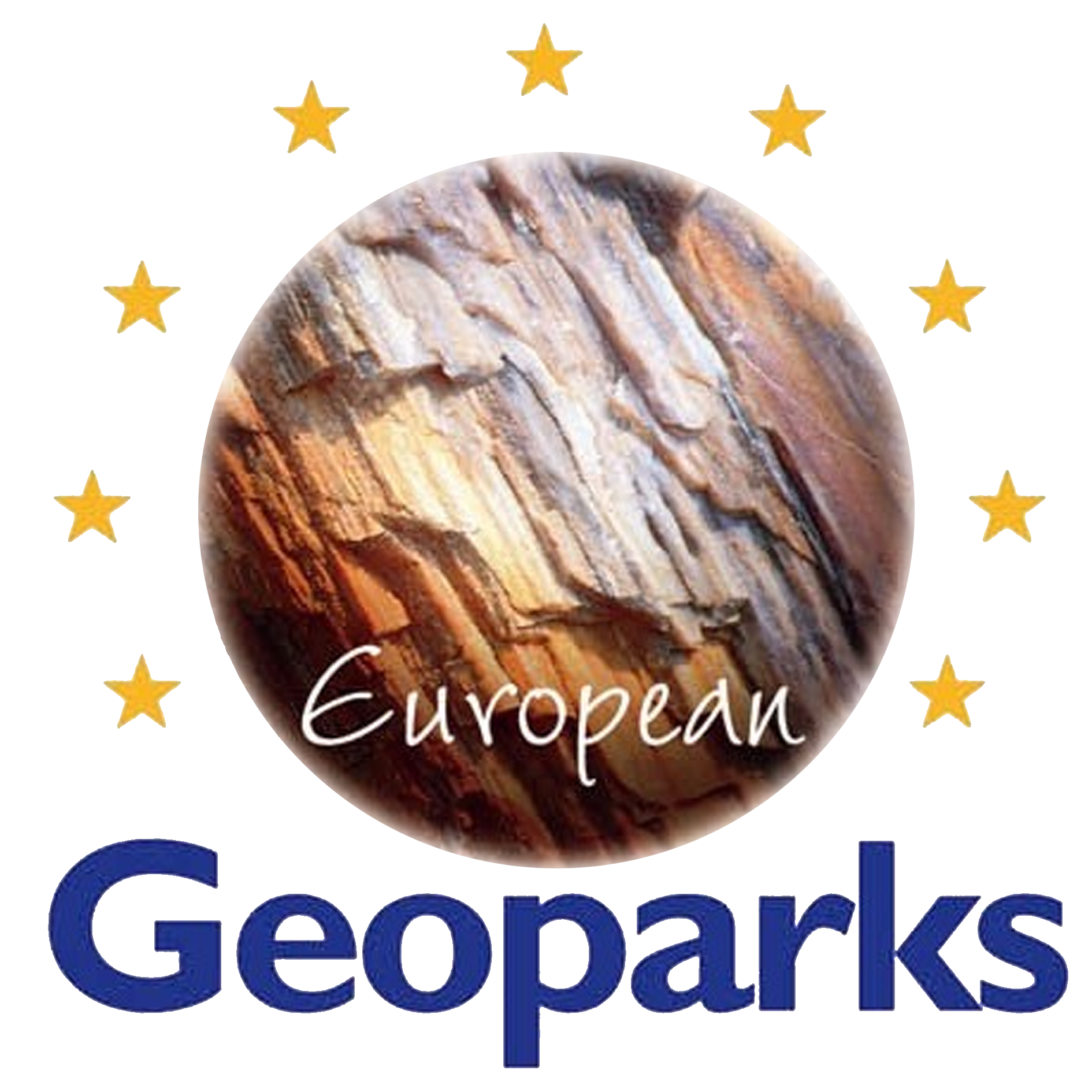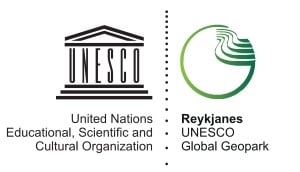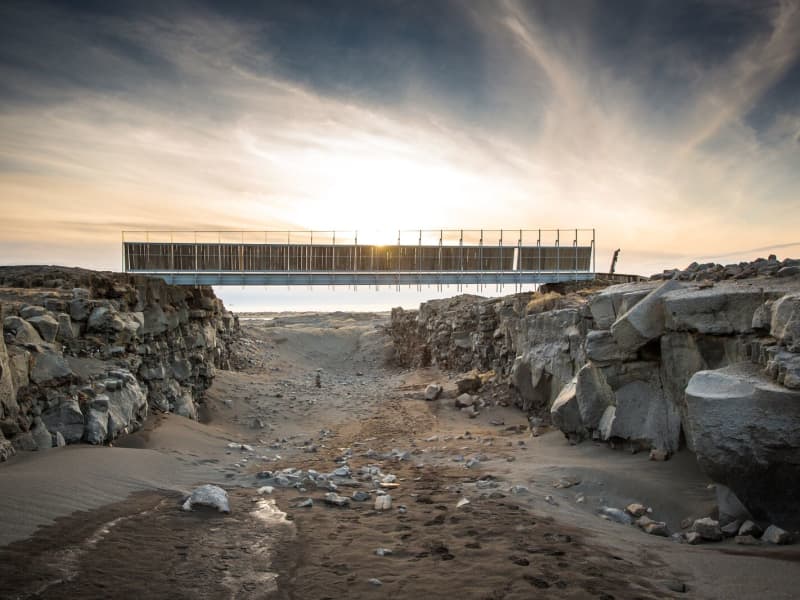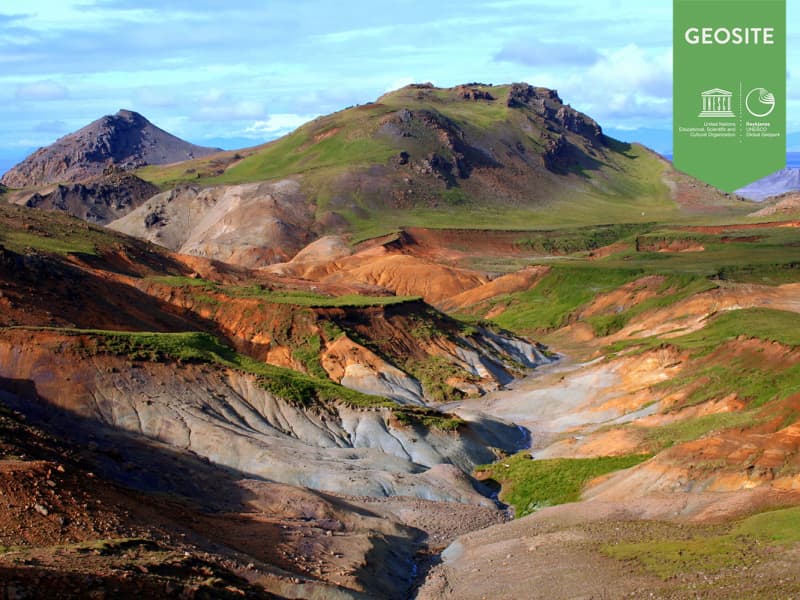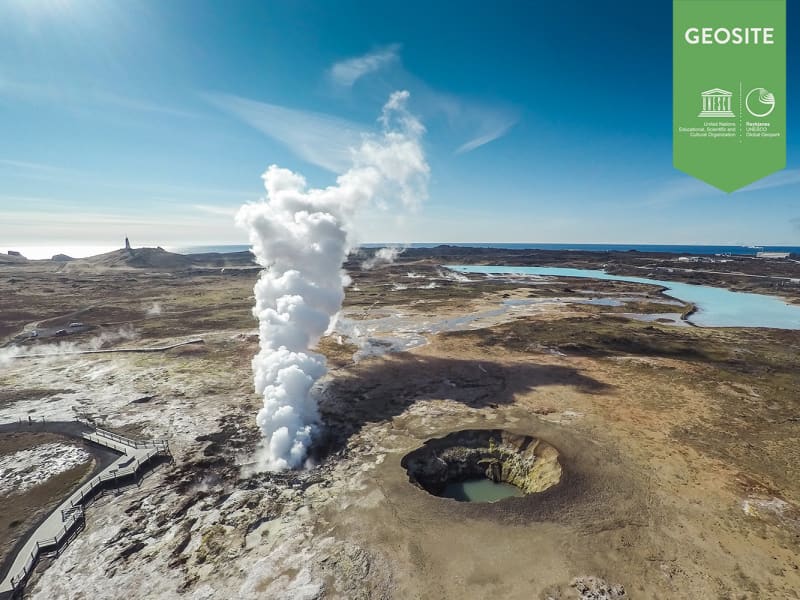The Mid-Atlantic ridge comes ashore on the Reykjanes peninsula.
The peninsula, with its diversity of volcanic and geothermal activity, is a Geopark and is the only place in the world where the Mid-Atlantic Ridge is visible above sea level.
The word geo is linked to the goddess Gaia, who was the personification of Earth in ancient Greek mythology. She was one of the primordial deities, the great mother of all, mother earth.
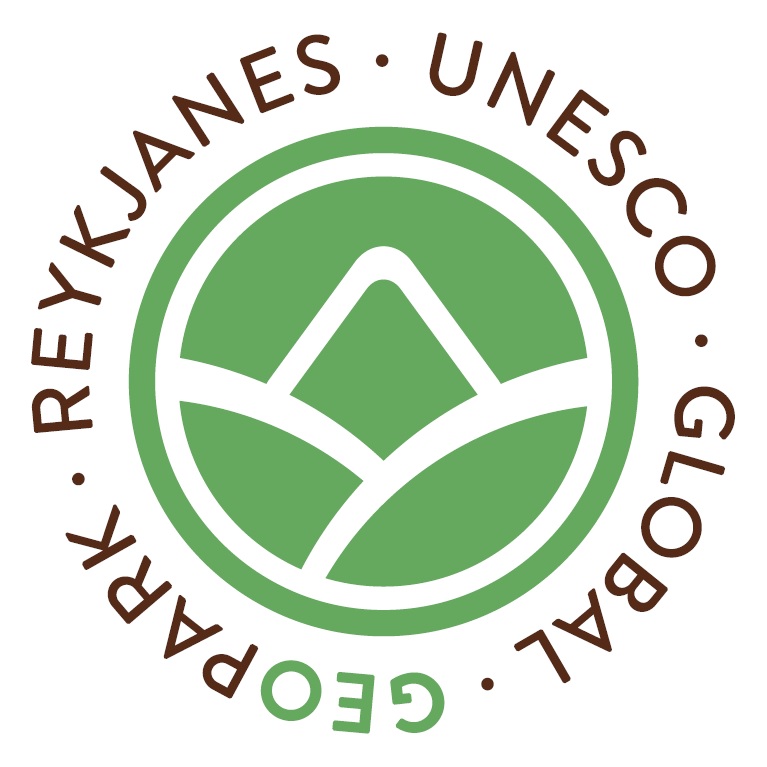
Reykjanes Geopark lies on major plate boundaries along the Mid-Atlantic Ridge, part of the 65,000km mid-ocean ridge that encircles the earth like a seam of a baseball. Although 90% of this mountain range lies deep below the surface of the ocean, it rises above sea-level right here on the Reykjanes Peninsula, making this one of the only places on earth where it is visible.
It is home to many important geological formations, some of which are utterly unique, including numerous types of volcanoes in at least four separate volcanic zones, with hundreds of open fissures and faults.
The Reykjanes Peninsula is a continuation of the Mid-Atlantic Ridge, which rises from the sea at the very tip of the peninsula and diagonally crosses Iceland from the south-west to the north-east. You can read the area’s geological history several hundred thousand years back in time, although most of the strata are less than 100–200 thousand years old. The last series of eruptions on the Reykjanes Peninsula began around AD 1000 and ended 250 years later.
The landscape that makes up the peninsula is characterized by tuff mountains and hyaloclastite ridges that formed in subglacial eruptions, as well as several series of craters and other large shield volcanoes from more recent times. In many places, there are lava stacks that formed in fissure eruptions, when large volumes of lava flowed from craters in the faults. Eruptions in Reykjanes are rarely accompanied by ash except where the volcanic fissures opened underwater or in the sea.
Earthquakes are frequent due to the spreading of the plates and occur most commonly as earthquake swarms that can last for several years. Although most of these are minor, every so often they can be felt across the entire peninsula.
Reykjanes Unesco Global Geopark is the second geopark in Iceland and the 66th member accepted into the European Geoparks Network in September 2015.
Reykjanes Geopark has listed 55 sites as Geosites. Those sites have a significant role in the Geopark and are connected to the story of the Mid Atlantic ridge and the effects of the tectonic plates.
Further information on the Reykjanes Geopark can be found on their website www.reykjanesgeopark.is.
